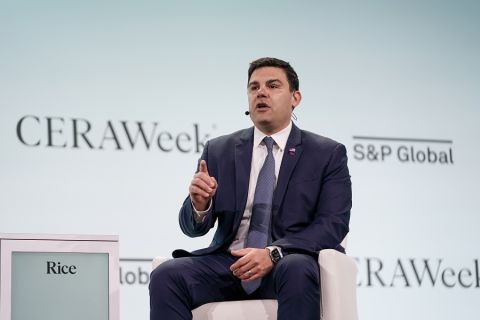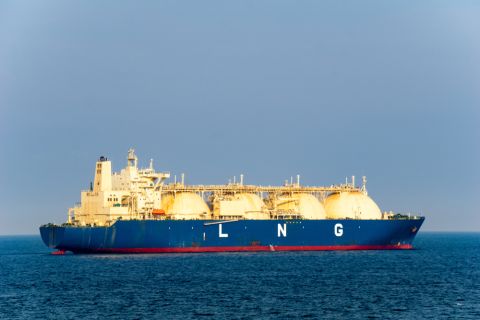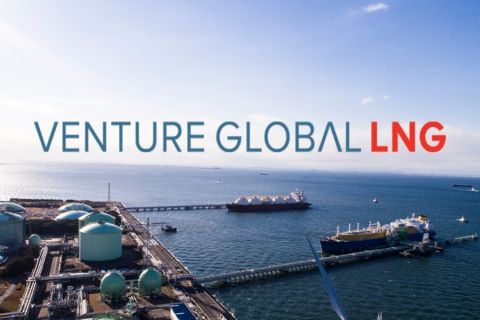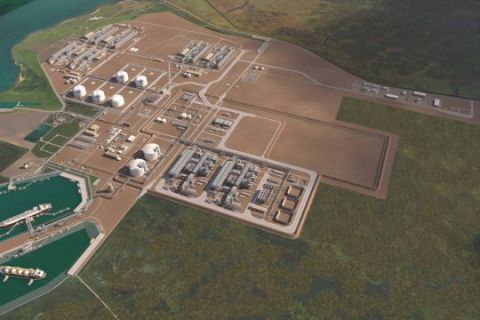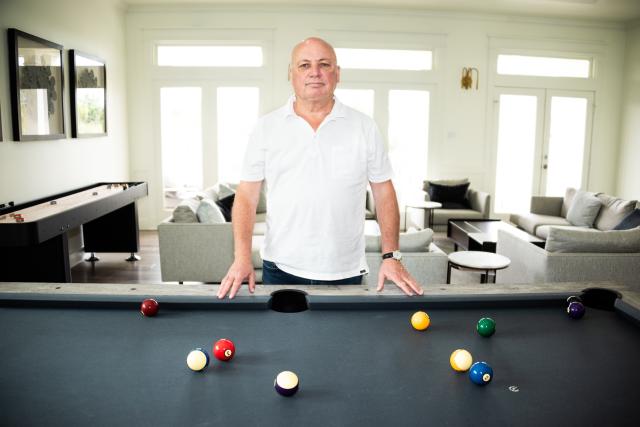
“We’re not going to have a pandemic every few years, but we’re in a commodity business, which means we need to be able to function and make money in a low-price environment,” said Al Carnrite, founder and CEO of The Carnrite Group. (Source: Steve Toon/Hart Energy)
[Editor's note: A version of this story appears in the July 2020 edition of Oil and Gas Investor. Subscribe to the magazine here.]
Price shocks should come as no surprise to the oil and gas industry, according to Alan Carnrite, founder and CEO of The Carnrite Group, a Houston- and London-based boutique management consulting firm. They show up like clockwork every few years. The only thing shocking to Carnrite is how many companies are perpetually unprepared for the inevitable downturn in commodities when they do happen—like now.
The Carnrite Group is in the business of transforming companies. In the current environment, oil and gas clients faced with strategic, operational and financial challenges, as well as oversized cost structures and underperforming portfolios, look to Carnrite to help them navigate this unprecedented environment. Formed in the early 1990s during the recovery period following the legendary bust of the 1980s, Carnrite has seen its share of downturns—and has guided numerous companies through them.
“Change management” is one of the company’s driving forces. “No matter what we do, if the changes don’t get implemented and ingrained into the organization, then the company doesn’t get the benefit of it. We spend a lot of time thinking through how we make it part of the DNA and culture of a company,” he said.
Born and raised in Canada, Carnrite found his foothold in the energy industry with Pacific Petroleum, at the time the major Canadian affiliate of Phillips Petroleum. Pacific Petroleum was subsequently bought by Petro-Canada, where Carnrite spent two years as the upstream lead of a project team tasked with taking the company public, at that time Canada’s largest initial public offering.
As fate would have it, he tapped a Houston firm named Sterling Consulting Group to help with the IPO, which later wooed him to move to Houston with his family. He later acquired Sterling Consulting Group in a leveraged buyout, and he ultimately formed The Carnrite Group in 1992.
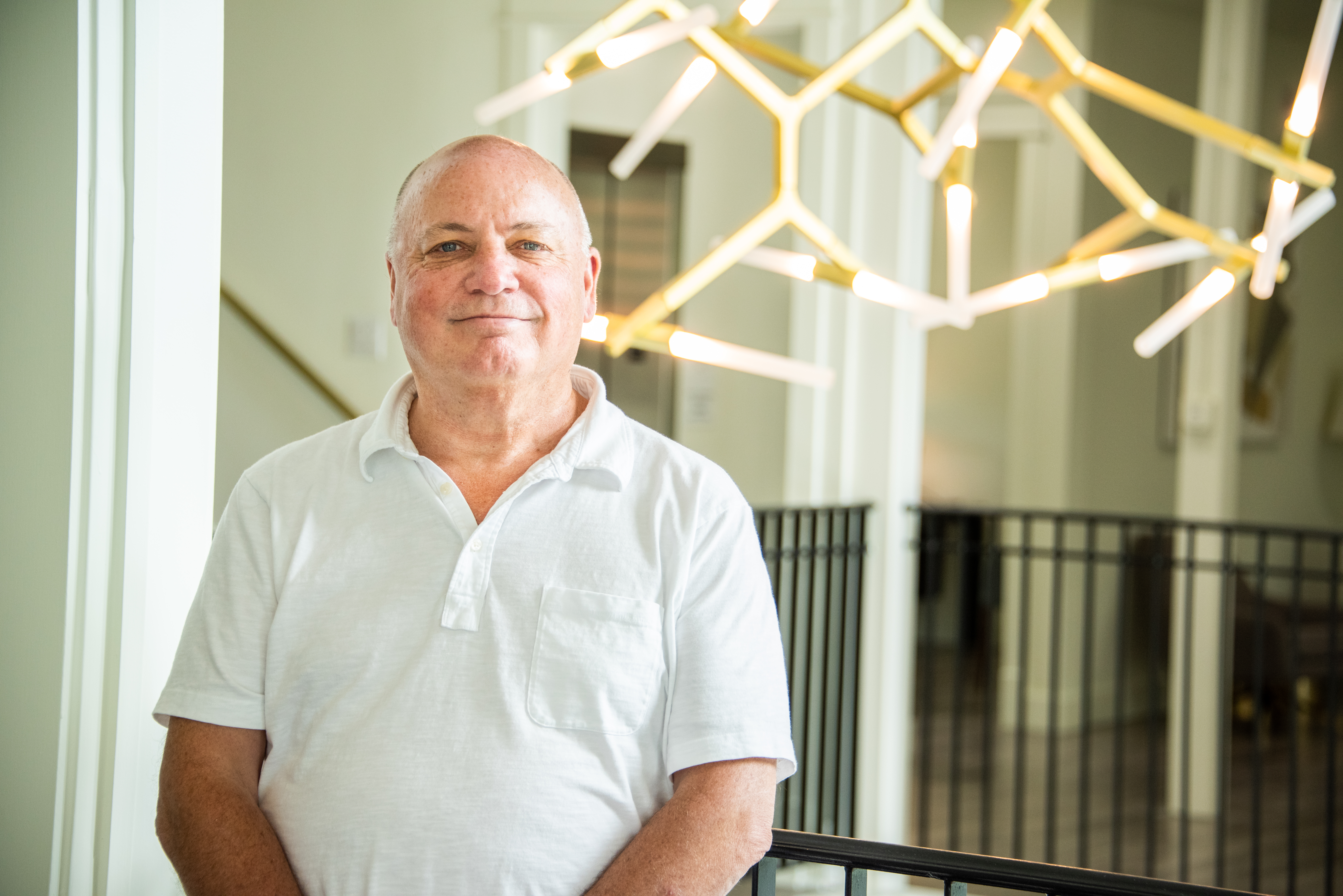
“I love the freedom to explore opportunities with every company because the cultures are so different,” he said of his choice to become a consultant. “People in the industries with which we work are great—they’re second to none—so when I had the opportunity to be a consultant to a diverse group of companies, I jumped at it.”
Carnrite Group played an active role in many of the corporate consolidations, as well as the predecessor companies that ultimately consolidated, that took place in the late 1990s, including Chevron/Texaco, Exxon/Mobil, and Conoco/Phillips. In that period, companies were being restructured to survive in an extended period of low oil prices. Today, he said, “A lot of the new management teams have never been through an extended period of low commodity prices. We haven’t truly had one for 20 years, and now we’re faced with the possibility that we’ve come full circle.”
Investor visited with Carnrite in his Houston office for his perspective on how companies can best manage the current downturn.
Investor: Is this downturn fundamentally different than those that came before, or is it just another turn on the boom and bust cycle?
Carnrite: This is dramatically different. Over the years we’ve had events such as the dot-com bubble and the financial crisis that destroyed oil and gas demand temporarily, but those were relatively short cycles. The current crisis is the first time we’ve had massive demand destruction driven by the pandemic as well as a supply issue. To think that 20 or 25 million barrels a day of oil demand has fallen away in a short period of time—that’s a major issue for our industry. Now the question is, is it a V-shaped recovery? Is it U-shaped recovery? What will it really look like?
Honestly, I don’t think it really matters.
We’re not going to have a pandemic every few years, but we’re in a commodity business, which means we need to be able to function and make money in a low-price environment. We need to get used to the fact this is the business we’re in.
It would be naïve to think we’re not going to have some level of structural, long-term demand destruction coming out of this. More people will work from home. People will continue to shop online. People aren’t going to services such as Zoom is everybody has figured out we don’t need to be together in one place to have a meeting. The days of flying to London and Amsterdam for a meeting, I think, are gone, which will impact jet fuel demand in the long-term.
We’re working with our clients to plan for lower for longer for at least a three- to five-year period. If higher oil prices come back before then, hallelujah, but the industry can’t afford to plan for it to happen. We’ve never had two black swan events—the Saudi-Russia push for market share and COVID-19—at the same time.
Investor: So do you see this as a short-lived downturn or one that’s more extended?
Carnrite: I think it’s more extended. The reason I say that is even if you believe demand will rebound quickly, the first 15 million barrels coming back online are barrels currently shut-in, largely in Saudi Arabia and Russia. The market is really not balanced until we get back to somewhere close to 100 million barrels a day on demand, which is going to take at least two or three years. I think we’re in a lower-for-longer environment. Certainly lower than $50 a barrel. That’s the way I’d be running my company if I were the CEO of an oil company.
Investor: What’s the health of the U.S. oil and gas industry at present?
Carnrite: It’s severely stressed. Whether you’re a producer or an oilfield services company, capital is fleeing our industry in this environment—as it should be, because the vast majority of companies can’t make money at today’s prices. Unfortunately, there are many more restructurings and much more consolidation that needs to occur.
Part of the problem is that the cost structure in our industry is still just too high. We have too many companies, too many management teams, too much of everything. If there’s ever a point where we’re going to see a major restructuring of our industry, it needs to be now.
The last time the industry went through major restructuring was in the late 1990s and early 2000s, when major consolidation took place. That’s where costs really fell out of the system and portfolios improved substantially. Since then, we’ve had a lot of new entrants into the industry, which has resulted in some benefits but also driven up the cost structure. Personally, I think we need to go through a similar restructuring like we did back then, but this time, it’s going to be more complicated because there are a lot more players today.
Investor: What differentiates companies that were prepared for the price shock and those that weren’t?
Carnrite: We’ve been reminded again that leverage matters, particularly in a commodity business where companies are price-takers. Companies with too much leverage in this price environment, especially if they aren’t well hedged, are in a world of hurt. Absent a large increase in commodity prices, it will be really challenging to overcome a lot of debt. We seem to get reminded of that every few years.
The other thing is the cost structure is simply too high in many companies. High cost structures can manifest themselves in a number of ways—too many offices, the way they do their business in the field, an organization structure built for growth and even excessive compensation. The cost structure of the industry must continue to come down for many companies to have a chance at surviving a long-term price shock like we’re in currently.
Investor: What do management teams in the fray need to understand and adapt to while navigating this low-price period?
Carnrite: Our advice to them is to assume we’re going to be in a low-price environment forever. In other words, forget about your hedges— hedges are just an asset sitting on the balance sheet. How do you not only survive but generate reasonable returns in a $30, $35, or $40 environment? That’s the type of approach we’re recommending to all of our clients. Operate as if this is the new normal. If we see some uplift in price, we’ll take it, but don’t plan on it.
Investor: How long is forever?
Carnrite: At least five years.
Investor: What’s the framework when you go into a company to evaluate what needs to change within the company?
Carnrite: The first thing we do is compare the company’s cost structure to what we consider best-in-class. We know what best-in-class looks like thanks to years of experience throughout all segments of the industry. We typically attack costs first before looking at other opportunities, because cost is usually the quickest way to move the needle and improve cash flow.
Beyond cost, portfolio is the next critical step. Using E&P companies as an example, we work together to get a handle on economics at the well level. Well-level economics allow management to focus on what the portfolio looks like today versus where we need to take it tomorrow. We’re big believers in running a business for today’s economic reality.
We always build a value proposition and ask, “How are we going to capture the opportunity quickly and efficiently?” Everybody is busy. It’s not as if we walk into a company and see people sitting around doing nothing. There are good, talented, hard-working people in these organizations. We just bring a level of objectivity and experience from across a variety of companies to assess costs, performance and the way work gets done.
Investor: You mentioned a lot of companies are headed toward bankruptcy. When should a company be proactive in seeking restructuring? Are there any signs that they should be aware of?
Carnrite: Most of them know the warning signs but sometimes tend to ignore them. There is enough data out there to know whether a company’s costs are best-in-class or not. Companies can either ignore the data or acknowledge they have to do something differently.
Same thing for portfolios. There are enough data points to measure whether a portfolio is performing and generating returns. There are typically a lot of internal warning signs that go off that tend to get ignored—because tomorrow’s going to be a better day than yesterday. That eternal optimism has always been the mentality of our industry.
Investor: Why haven’t we seen more consolidation?
Carnrite: I think the Occidental/Anadarko acquisition may have sparked a wave of consolidation among companies of that size. Unfortunately, commodity prices collapsed shortly thereafter, and balance sheet strength suddenly became really important. We’re not seeing consolidation because of the distressed balance sheets in our industry.
You are starting to see private-equity companies coming together. As an example, if a private-equity firm has three E&P portfolio companies in the Eagle Ford, combining the companies is a natural thing to consider. It’s starting to happen. One reason we haven’t seen even more of this type of consolidation is you have to pick a management team. You have to pick a winner. Doing so can be emotional and is never easy. But we’re starting to see major consolidation in that space.
Investor: Do overlevered companies need to go through a bankruptcy or restructuring to eliminate debt before we’ll see consolidation?
Carnrite: If you’ve got two weak balance sheets, it’s hard to put them together and make the combined company better. Sometimes the asset fit is so good it can make sense, if you’re able to capture certain cash flow improvements and synergies. But, again, if the balance sheets are too stressed, then you’re not going to be able to make the math work in most cases. Some of the best companies to acquire are the ones that are coming out of Chapter 11.
There are a few important questions to ask when considering consolidation. Can the combined assets generate reasonable returns? Is there a natural owner of those assets? If there is, does that potential owner have a balance sheet that allows them to stretch to buy that company?
In past cycles we would have seen the mid-sized companies be the consolidators. However, many of those companies are limited by both their own balance sheets and those of the companies they may otherwise acquire. The only companies that definitely have the balance sheets to consolidate are the integrated majors.
“Part of the problem is the cost structure in our industry is still just too high. We have too many companies, too many management teams, too much of everything. If there’s ever a point where we’re going to see a major restructuring of our industry, it needs to be now.”
Investor: Do they have any desire?
Carnrite: No. In general, they’re happy with their current portfolios, so I don’t think you’re going to see them acquire in a large way. Anadarko was a great fit for Chevron because of the international and Gulf of Mexico assets.
Is there another “Anadarko” that a major would consider? I personally don’t think so. You could say, “Why not buy a company like Occidental?” It all comes back to the balance sheet. Companies don’t want to take on the debt, even if you’re a major.
When Mobil merged with Exxon, Mobil was convinced we were going to be in a low-price environment forever and scale was going to be critical. It wasn’t forever, but we were in a low-price environment for a number of years, and scale was critical. A lot of CEOs believe scale is important now, and it is a matter of making sure you are the best and natural owner of those assets and have a combined balance sheet positioned for a low-price environment. I expect the consolidation we do see will be equity transactions.
Investor: You compare today with the late ’90s when a lot of consolidation happened and suggested it needed to happen among the independents today. Is that even realistic?
Carnrite: I think it’s happening now among the private companies. It just doesn’t make the headlines. But among the public ones that are of any scale, we don’t have that many left. You count them, and the list is pretty short. Will they consolidate with each other? It’s not an obvious asset fit in the majority of potential transactions. I think most of the consolidation is going to take place amongst private companies over the next couple of years.
Most companies, even small private companies, have about $25 million or more of overhead. If you have 50 small companies with $25 million of overhead each, at some point you only need five of them. That’s the consolidation that needs to take place.
Investor: Is now a good time to buy assets for those that can?
Carnrite: Yes. We’ve been waiting for the bid-ask spread to close for a long time. Now the ask has come down, and there’s no bid. I would think if there’s a bid for a particular set of assets, there’s going to be a receptive audience where there was not before. I’d advise clients to look at assets if you have the liquidity to do it.
The best companies get better in environments like this one at the expense of weaker companies. Frankly, that’s the way it should be. The best companies bring a better cost structure, better processes, better capability, better technology. The best companies should be using this environment to acquire, assuming it doesn’t compromise the health of their balance sheet. I’d much rather buy in a $30 environment than a $100 environment.
Investor: Private equity tends to be an expert in knowing when they can get a good deal. It looks like now would be the time for private equity to jump in. Are you seeing that trend at all?
Carnrite: No. Private-equity money going forward is likely going to be focused on investments where they can earn a distribution on invested capital. It will be much longer-term capital instead of the “build and flip” model of past cycles. It will be interesting to see if the funds allow longer-term capital, which may require 10- or 15-year time horizons. There are a couple of private-equity funds that were built for that, but I don’t see a lot of new capital coming into the space right now from private equity.
Investor: Why not if the opportunity is ripe?
Carnrite: We didn’t do well in the last round; we have a lot of history to get over in the private-equity world. A lot of people that made past investment decisions are leaving the private-equity space because many of the investments did not pan out and the industry destroyed a lot of value.
Additionally, you have the ESG movement. Investors of all kinds are looking at that saying, “Okay, now what does that mean for us? Do we really want to be a bigger player in oil?” I think the verdict is still out, but it’s going to be a while before you see private equity invest substantially again.
Investor: Do you think E&Ps need to diversify away from shale only, or can shale compete economically in the global market?
Carnrite: There’s no doubt shale can compete, but shale can’t compete on a global scale if you’re in the shale business with a highly leveraged balance sheet. In shale, there is a velocity of capital required to continue to invest because of the steep decline rates. It’s massive. If you don’t manage your business well, all of a sudden, you’re out over your skis and only need a short downturn in commodity price to really put yourself in a box.
But can shale compete? Absolutely. Shale competes.
Investor: Are you concerned about a talent exit from the industry?
Carnrite: It really scares me, actually. Every time I go on LinkedIn I see people leaving jobs after 15 or 20 years at the company or in the industry. We don’t have a plethora of new people coming in behind them to fill the void.
We did this in the ’80s, and we lost a whole generation of engineers. Nobody wanted to be in the industry. People went away, and they never came back. We’re going through the same thing right now, and they’re likely not going to come back to the industry.
There’s a technical component to it for sure, but it’s also the experience of having lived through a down cycle. The level of experience we’re losing is frightening. In many cases, when the horse leaves the barn, it doesn’t come back.
Investor: So what does this mean for the future?
Carnrite: We may see companies get a lot more aggressive bringing retirees out of retirement. A lot of these people left the industry at 50 and 55. I think they’re going to wake up a year from now and say, “Now what am I going to do in retirement? It’s not what it’s cracked up to be.” I think a lot of people recognize they want the flexibility but don’t want to be home all the time.
I do think you’re going to see a variable workforce that’s going to put new stresses on how the company operates. You’re used to having somebody at your beck and call as a full-time employee. You will no longer have that. It will add a layer of complexity to managing your workforce.
Investor: What are your thoughts on natural gas and the prospect forward for those companies?
Carnrite: We think we’re oversupplied natural gas until about 2023 globally. We overbuilt LNG, in essence, so it’s going to take until 2023 for demand to catch up with the supply we currently have in operation and under construction.
And yet we’re still sanctioning new LNG projects, especially internationally. On the Gulf Coast, I think you’ll see them get shelved for a period of time, but a lot of the international ones are still getting built, which says the industry will likely be oversupplied a little bit longer than we think. Gas is going to be in a low-price environment for a number of years.
For U.S. domestic gas, we’ve got to continue to curtail wells and drill less. We have so much natural gas. We have to continue to exercise the same discipline we’re seeing right now on the oil front, because there’s just so much of it [gas].
Investor: What best advice would you give to management teams today to prepare for the future?
Carnrite: Plan for the reality of today. This industry has a great history of optimism. Frankly, you wouldn’t be in this industry if you didn’t have some level of optimism. You’re dealing with a commodity thousands of feet below the ground. You’ve got to find it and produce it, despite all the unknowns and variables. So, if you’re not an optimist, you likely shouldn’t be in the industry.
But we have to be disciplined and screen that same optimism through our plans. The reality is we could be in the world we’re in today for a number of years, so how do you become the best company today?
“The best companies get better in environments like this one at the expense of weaker companies. Frankly, that’s the way it should be. The best companies bring a better cost structure, better processes, better capability, better technology. The best companies should be using this environment to acquire.”
If you can be the best company in this environment, you’re going to be gangbusters in a better environment. And being the best company in this environment, you’re going to attract capital, making you the natural consolidator when opportunities present themselves. That’s our advice to our clients.
Investor: What do you think the industry will look like on the other side of this?
Carnrite: Smaller. Fewer companies. Much more capital discipline because the capital won’t be there, which I think is a good thing in the long run. A lot more focused on returns. I don’t think anybody will be focused on just volume. We’re not going back to that.
If I’m right, it will feel like a totally restructured—and different—industry. The restructuring will include the companies that are going through bankruptcy today. That’s a lot of debt leaving the industry. My hope for them and whoever owns them post-bankruptcy is they continue to drive that discipline. The fact they have minimal, if any, debt doesn’t mean they should have debt and go back to out-spending cash flow. I hope they don’t layer it back on by doing the same stupid things we did before.
Recognize that we’re in a commodity environment. 2008, 2014, 2020. Three times in the last 18 years; every six years we had some kind of shock. Be prepared.
Investor: What’s the mission of your Carnrite Cares initiative?
Carnrite: Thank you for asking. Carnrite Cares is near and dear to our hearts. We support various programs and charities—generally in the communities in which we work. Our efforts are currently focused mainly in Houston because that’s where many of us live. The organizations we support are the ones that are important to our staff. We’ve always given back to the community as individuals, so naturally, we want to give back to the community as an organization as well.
Once we start supporting a specific organization, we generally stay with them for years, but we also try to layer on new charitable causes every year. It’s about supporting our employees and the causes that are important to them and their families. Even in our worst year, our first dollar of profit will always go to support our charitable giving program. That is how important it is to us.
Recommended Reading
EQT’s Toby Rice: US NatGas is a Global ‘Decarbonizing Force’
2024-03-21 - The shale revolution has unlocked an amazing resource but it is far from reaching full potential as a lot more opportunities exist, EQT Corp. President and CEO Toby Rice said in a plenary session during CERAWeek by S&P Global.
Watson: Implications of LNG Pause
2024-03-07 - Critical questions remain for LNG on the heels of the Biden administration's pause on LNG export permits to non-Free Trade Agreement countries.
Venture Global Seeks FERC Actions on LNG Projects with Sense of Urgency
2024-02-21 - Venture Global files requests with the Federal Energy Regulatory Commission for Calcasieu Pass 1 and 2 before a potential vacancy on the commission brings approvals to a standstill.
Belcher: Election Year LNG ‘Pause’ Will Have Huge Negative Impacts
2024-03-01 - The Biden administration’s decision to pause permitting of LNG projects has damaged the U.S.’ reputation in ways impossible to calculate.
Despite LNG Permitting Risks, Cheniere Expansions Continue
2024-02-28 - U.S.-based Cheniere Energy expects the U.S. market, which exported 86 million tonnes per annum (mtpa) of LNG in 2023, will be the first to surpass the 200 mtpa mark—even taking into account a recent pause on approvals related to new U.S. LNG projects.

